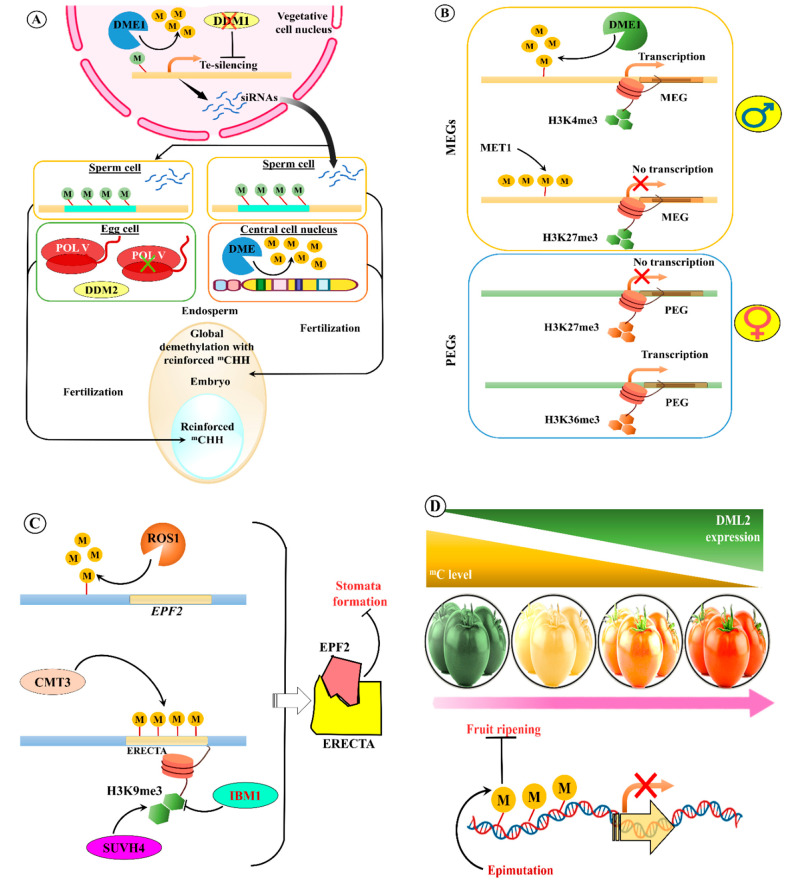Figure 3.
Functions of transposable element (TE) methylation in plant growth, stomata formation, and fruit ripening. (A) In the vegetative cell (male gamete) of Arabidopsis, the TE is silenced by DME-mediated DNA methylation by downregulating the chromatin remodeller DDM1. Small interfering RNAs (siRNAs) derived from TE transcripts travel from the vegetative cell to the sperm cells to reinforce global demethylation (m) in the endosperm with reinforced CHH methylation (H represents A, T, or C) [160,242,243,244,245]. (B) Gene imprinting in the endosperm occurs either at MEGs or PEGs through DNA and histone H3 lysine methylations [246,247,248]. (C) Methylation at the promoter of the gene encoding epidermal patterning factor 2 (EPF2) that suppresses stomata formation is pruned by ROS1, whose mutation silences the EPF2 or the ERECTA genes, thus resulting in stomata formation in Arabidopsis [249,250]. (D) Gradual expression of DML2 during tomato fruit ripening reduces 5-methylcytosine (mC) DNA methylation at several genes (such as CNR, involved in fruit ripening) and epimutation of those genes inhibits fruit ripening [42,229,251]. DME, transcriptional activator demeter; DDM1, decreased DNA methylation 1; MEGs, maternally expressed genes; PEGs, paternally expressed genes; ROS1, repressor of silencing 1; DML2, DNA demethylase DME-LIKE 2; MET1, methyltransferase 1. The illustration was adapted and redrawn from Zhang et al. [42], with copyright permission from the Licensor Springer Nature (Nature Reviews Molecular Cell Biology: Nature publisher) and Copyright Clearance Center (https://www.copyright.com) (Supplementary File S4).

